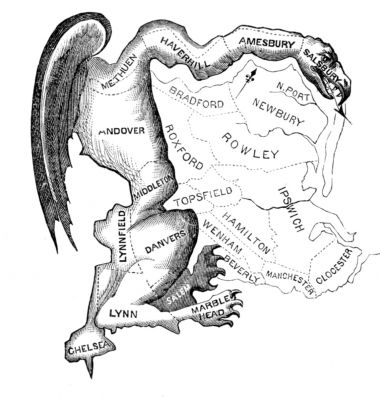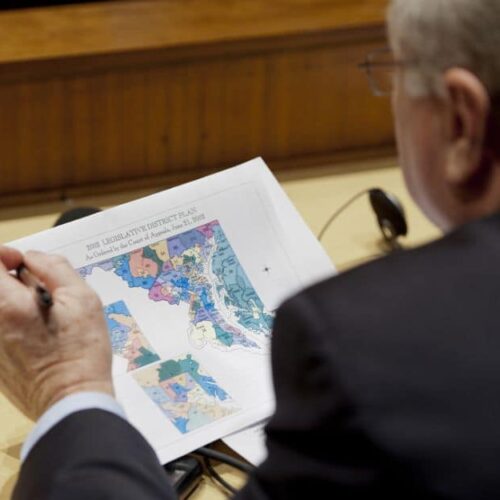Introduction
The U.S. Supreme Court’s ruling that the federal judiciary has no role to play in extreme partisan gerrymandering cases yields uncertainty as to what happens next, but likely throws the issue into a mix of state venues.
In a 5-4 vote along ideological lines, the court’s conservative majority said, in the words of Chief Justice John Roberts’ majority opinion, that federal judges “have no license to reallocate political power between the two major political parties.” The ruling came in two consolidated cases, Rucho v. Common Cause and Lamone v. Benisek.
The decision effectively wipes out federal courts as an avenue in which proponents of redistricting reform can be heard. The case involved challenges from plaintiffs in North Carolina who said maps had been drawn to favor Republicans in their state and from plaintiffs in Maryland who said their maps were altered unfairly for Democrats.
“The immediate consequence is there is no set of facts that is so extreme that gerrymandering or partisan gerrymandering would be unconstitutional under Roberts’ majority opinion,” said Yurij Rudensky, an attorney who works on redistricting at New York University School of Law’s Brennan Center for Justice, which advocates for voting rights.
Kati Phillips, a Common Cause spokesperson, added that her group believed that “all other partisan gerrymandering cases pending in the federal courts will halt.”
Redistricting is the process of redrawing voting maps for a state’s legislative and congressional delegations. When unusually partisan, it is also known as “gerrymandering” due to a serpentine map accepted in 1812 by Massachusetts Gov. Elbridge Gerry.

(United States public domain)
State legislatures usually hold the power to redraw these maps once per decade, following the federal census, leaving the party in power the chance to entrench its majority. In North Carolina, Republicans won 53 percent of votes across the state in the 2016 U.S. House of Representatives elections but claimed 10 of 13 seats, or 77 percent.
Some challenges against how maps were drawn relied on relatively new metrics developed by political scientists to better quantify the impact of partisan gerrymandering.
Roberts’ opinion took a swipe at these efforts by writing that no test “meets the need for a limited and precise standard” that would be usable in courts.
The liberal justices, joining in a dissenting decision written by Justice Elena Kagan, took aim at the ruling, blasting the court’s decision to refuse to “remedy a constitutional violation.”
“The partisan gerrymanders in these cases deprived citizens of the most fundamental of their constitutional rights,” Kagan wrote.
Roberts clarified that, while federal courts were removed from the issue, other avenues toward evolving the redistricting system remained open.
“Numerous States are actively addressing the issue through state constitutional amendments and legislation placing power to draw electoral districts in the hands of independent commissions, mandating particular districting criteria for their mapmakers, or prohibiting drawing district lines for partisan advantage,” Roberts wrote.
Jeffrey M. Wice was a longtime redistricting attorney for the Democrats and works on the topic with the National Conference of State Legislatures. He said the decision “opened the door for cases to be brought to state supreme courts,” and he expects continued attempts at the state level to do away with highly politicized gerrymandering.
“Voters are going to turn to creating independent redistricting commission, wherever state law allows that, if politicians continue to be greedy and overreaching in partisan line drawing,” Wice said.
Last year’s elections saw a surging movement to force states to take politics out of map drawing by introducing independent commissioners or demographers who would be in charge of redistricting. Voters in November approved such ballot measures in Colorado, Utah, Michigan and Missouri.
Voters in other states, including Arkansas and Oklahoma, are making a push for similar changes.
There is some movement at the federal level, too, where a Democratic bill known as the For the People Act of 2019 passed the U.S. House in March. Among its many purposes was ending partisan redistricting, although it is unlikely the Republican-controlled Senate will take up the bill.
Common Cause’s Phillips said that her organization would continue the fight state by state, with a focus on state-level legislation, cases brought in state courts and ballot initiatives. Another case in North Carolina is expected to be heard in July.
“Today was disappointing, but it’s not the end,” Phillips said. “It’s just the beginning. It’s a state-based fight. It’s a voter-based fight.”
Clarification: June 27, 6 p.m.: This story was clarified to say that redistricting is known as gerrymandering when the redistricting is unusually partisan.
Read more in Money and Democracy
Money and Democracy
A Republican wants old campaign cash to fund his nonprofit. A Democrat might show the way.
Tom Price could find comfort from Heidi Heitkamp.
Money and Democracy
What second-quarter fundraising can tell us about 2020
Presidential campaign finance disclosures help gauge candidate viability and voter enthusiasm.



Join the conversation
Show Comments